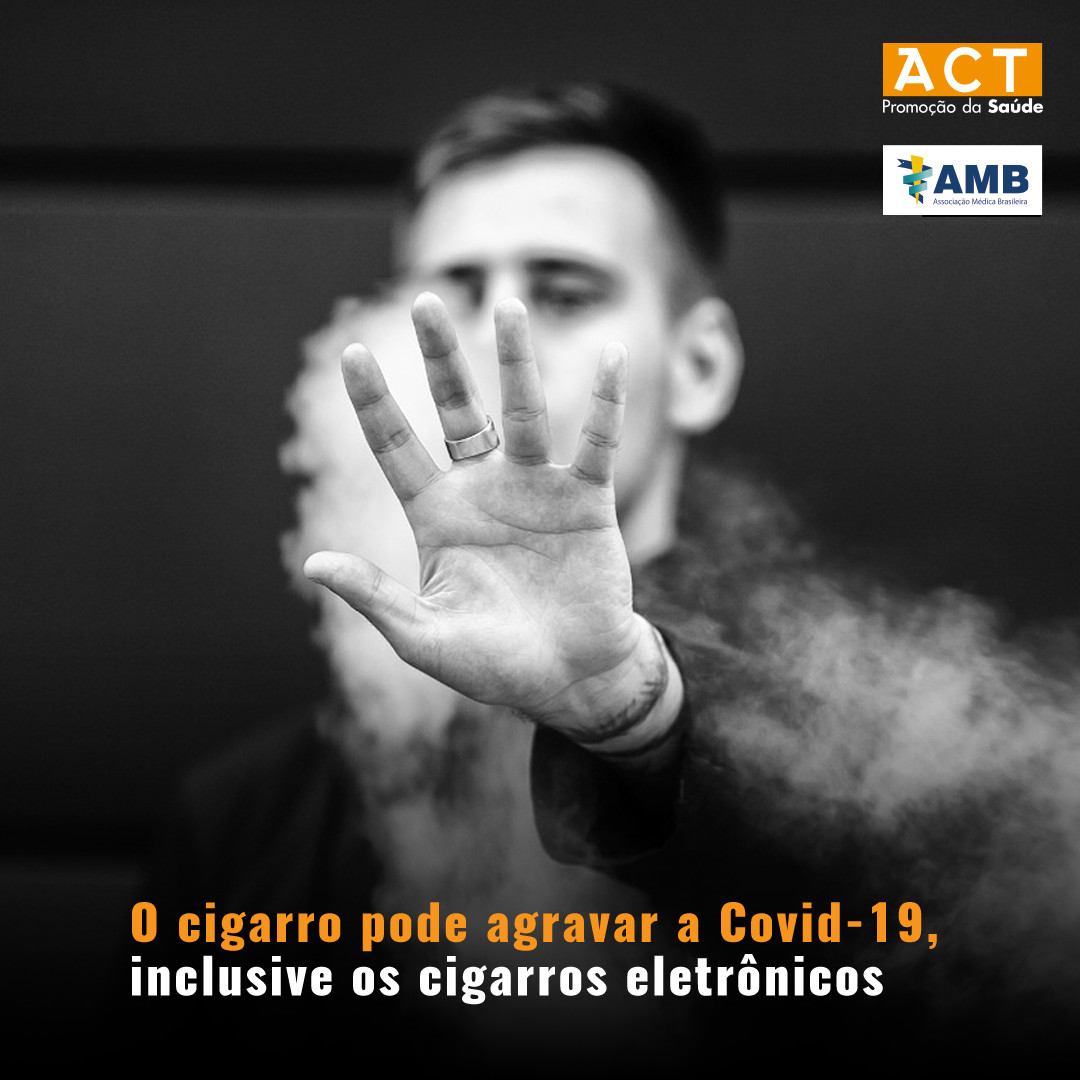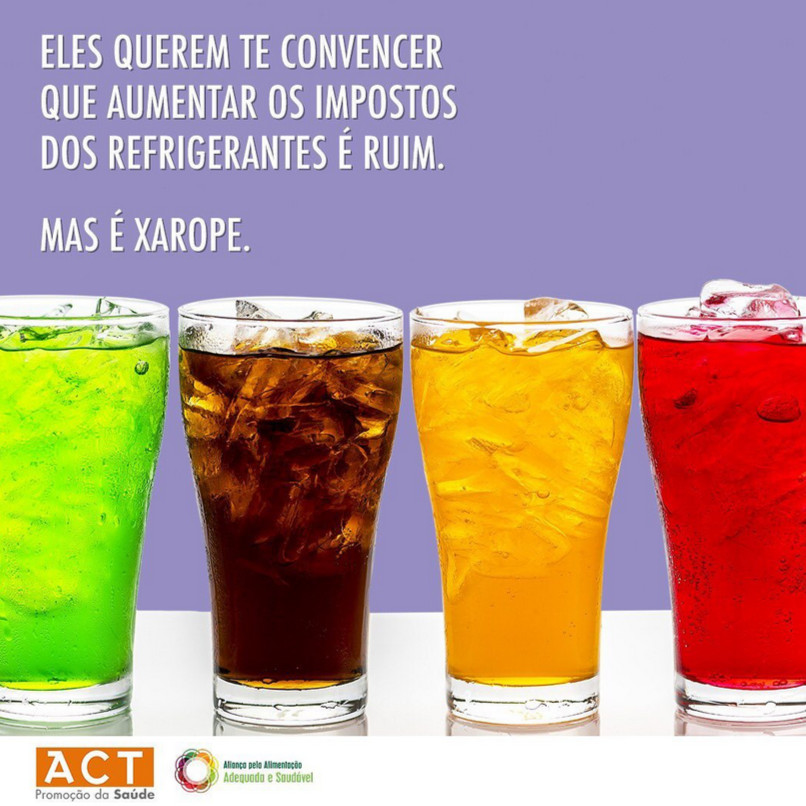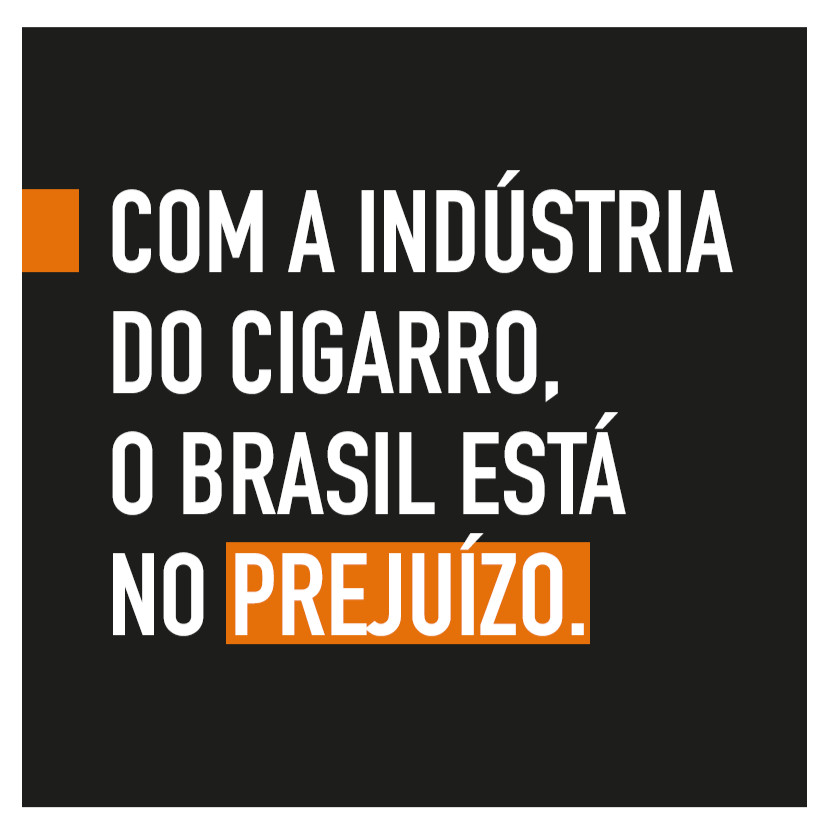monitorACT | Edition 15
10.10.22ACT Promoção da Saúde
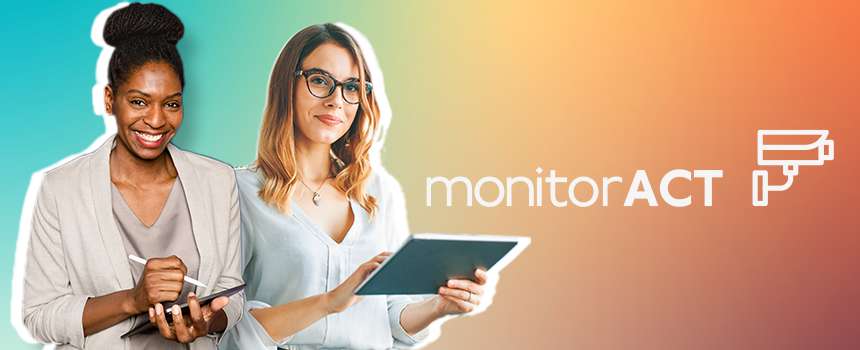
Editorial
Are we really going to add the colors or is it just about increasing sales? That was how Mariana Pinho and Victória Rabetim started off the 15th issue of Monitor ACT, bringing up more questions about the marketing strategies of companies that manufacture products which cause damage to health and the environment. The case in point, raised by the two authors, involves the capture of movements within society, as we have shown in previous editions, but this time with the attempt by tobacco companies to engage the LGBTQIA+ community in order to sell more cigarettes. For us, it is an opportunity to ask if real changes are taking place and if the inclusion of people identified with this cause is really underway, for real, in the daily routines of companies. Or if, as is apparently the case, it is just a marketing strategy to sell more, under the colors of the rainbow.
Following the same line of questioning, Bruna Kulik Hassan and Vitória Moraes bring up some doubt with regard to product reformulation. They take the example of soft drinks, whose consumption has been falling all around the planet after it became more evident that they are associated to various diseases. In order to avoid the loss of market share, manufacturers have started to launch new soft drinks, now in a sugar-free version and containing sweeteners, whose harmful effects still lack further studies regarding their benefits. In this case, they ask the question: would there be damage reduction or just an exchange of one form of damage for another?
Beer companies, on the other hand, are using a strategy that was widely used in the past by tobacco companies: to associate the consumption of their products to a healthy life and to sports. Does anyone not remember the skydivers parachuting and lighting up a cigarette at the end? Or the mountain climber reaching the top and taking a deep drag on his cigarette? In her article, Lara Cury addresses the case of a new line of beers advertised as having the ability to hydrate the body of athletes and recently, a brand partnering with a famous fashion designer to create a pair of sneakers, whose soles contain... beer, showing that it is possible to walk on it. Who would dare to ingest something so unusual? The company reckons the answer would be “many people”.
In this issue we have a special participation by Silvana Rubano Turci, coordinator for the Oswaldo Cruz Center for Tobacco Studies. She explains how data collected with regard to social responsibility by the tobacco industry was essential for the creation of the “Diga Não aos Cigarros Eletrônicos” (“Say No to Electronic Cigarettes”) campaign. Along with campaigns by other partners, such as ACT, the action had a wide repercussion and helped to consolidate the perception that electronic smoking devices are not yet safe enough to replace traditional cigarettes.
Enjoy your reading,
Anna Monteiro
Communications Director
Are we really going to add the colors or is it just about increasing sales?
Victória Rabetim and Mariana Pinho
“Diversity”, in Portuguese, is a feminine noun which means the quality of that which is diverse, different; varied groups; multiplicity. When we read about diversity, we ask ourselves what the standard is, for something to be different from it. When we bring it into a corporate context, we must analyze its use with caution, even more so in a capitalist system dominated by companies that are omnipresent in people’s daily lives, such as those from the ultra-processed foods, alcohol and tobacco sectors.
Some authors suggest that the theme of diversity, equity and inclusion, represented by the DE&I acronym, has gained even more visibility with the “Black lives matter” movement, which emerged as a result of the fatal shooting of Afro-American teenager Trayvon Martin in 2013 and the acquittal of his killer. Since the movement, which gained international repercussion, diversity, equity and inclusion policies have gained more and more attention within the corporate sector and have secured best practice seals and recognition. These policies cover themes such as gender and intergenerational equity, people with disabilities, cultures, territories and spirituality, anti-racism, ethnic-racial issues and LGBTQIA+.
It is undoubtedly a complex proposition, and therefore cannot make changes to a company’s profile overnight. For that reason, there must be time for implementation and comprehensive attitudes. The social medias of companies, however, are already filled to the brim with these types of campaign, and many of them have won awards for their policies.
Corporate rhetoric or not, this is an issue that needs to be discussed by society. In this article we focus on the strategies used by tobacco companies to dispel the damage from consumers’ minds and knowledge that can be caused by the consumption of their products regarding health, society and the environment. This topic has been dubbed “diversity washing”, and has been the theme of articles in Forbes, Insider, Tobacco Tactics, a University of Massachusetts report, among others.
Cleaning up one’s image is important to increase the consumption of products and this applies to cigarettes, alcoholic and sweet beverages and ultra-processed foods. They are all related to illness and premature death for hundreds of thousands of people every year, imposing a burden on society as a whole which could be avoided. Therefore, to warn about the modus operandi of these companies can create awareness and help people to see these products in a new light, consequently saving lives.
Greenwashing, namewashing, genderwashing have been addressed in other previous Monitor ACT articles. Today we will focus on LGBTQIA+ washing, with a plus (+) sign to acknowledge other sexual orientations and forms of gender identity, understanding that gender and sexuality diversity is fluid and can change at any time.
The use of the rainbow colors to represent the LGBTQIA+ community is recurrent. Repeatedly so, if you will. In their 2021 institutional campaign, British American Tobacco lit up their head office in the UK with the colors of the rainbow. The company did a slight play on words, by using the letter “B” from BAT (as in “Be”), which beside the word “united” forms the message “Be (we are) united”, “We are BAT”.
Philip Morris International has received awards in Brazil for their inclusion policy. Stripes, for example, is a strategy to “attract and retain LGBTQIA+ talent”, according to their 2020 sustainability report. Messages are frequently posted on social media reinforcing the institutional DE&I policy.
Japan Tobacco International (JTI), who own the Camel and Winston brands, promoted an institutional campaign on the theme in 2019, started to incorporate other policies for their LGBTQIA+ collaborators, and colored their logo with the rainbow, when they celebrated JTI’s inclusion on the list of companies that contributed towards promoting LGBTQIA+ inclusion. It should be noted that the Global Diversity List certificate is offered by a group of companies, with Coca-Cola among its founding members.
Another very relevant point in the discussion about DE&I is that studies have shown that there is a higher percentage of smokers among LGBTQIA+ groups compared to the population in general. It is worth pointing out that that the social context of this public is related to repression, prejudice, acceptance issues, depression, among others, which is something that should not be ignored. The community also has a higher percentage of drug users and suicide rates than the general population. The spread of tobacco use among this group, however, does not seem to have happened by chance.
The tobacco industry’s strategy to target the LGBTQIA+ community was first brought to light through the revelation of internal industry documents referring to “Project Subculture Urban Marketing (SCUM)”, at the University of California San Francisco. The tobacco industry allegedly infiltrated LGBTQIA+ communities, financing organizations linked to HIV and gender policy issues, sponsoring pride marches, street fairs and film festivals. In the U.S., for example, menthol cigarettes are more frequently used by the LGBTQIA+ and black populations. It is also known that there is evidence of health damage resulting exclusively from the consumption of menthol cigarettes.
One case of cause capture serves as an example. A scientific paper published in Tobacco Control describes how in the 1990s Philip Morris used, to their own advantage, a boycott carried out against a politician opposed to a policy to fund Aids research. The boycott was proposed by the AIDS Coalition to Unleash Power, a community that works to improve the lives of people with the disease. The company exploited the differences within the LGBTQIA+ community and settled the issue by pledging large donations to fight the disease. Through corporate philanthropy, Philip Morris gained access to the LGBTQIA+ market without appearing to be gay friendly. Many organizations, hungry for recognition and funding from large corporations, welcomed Philip Morris’s proposals without considering the dangers to health posed by tobacco products.
With regard to food and alcoholic beverage companies, the strategies are similar and cause capturing in order to improve their corporate image and further promote their products is very frequent, as we will show in the following examples.
Marketing departments are very good at sticking rainbow colors on packages, points of sale and advertisements for their products. We think about how important and significant it would be for the colors to get off paper, come to life beyond these sectors, and that inclusive policies could actually lead to the end of inequality within Brazilian society as a whole.
That is why we invited managers and the population to think about use and abuse when they take ownership of the LGBTQIA+ and a variety of other causes in order to sell more products that cause illness and premature deaths. Thus, out of provocation, we repeat the title: Are we really going to add the colors or is it just about increasing sales?
Reformulation of unhealthy products: damage mitigation or damage exchange?
Bruna Kulik Hassan and Vitória Moraes
The fact that industrial sectors that market unhealthy products use the reformulation of their recognized sales leaders or the inclusion of new products in their portfolio with the argument of offering other, less harmful products to their consumers, is old news. This well-known strategy based on a damage reduction narrative is an argument which we have come to question.
The case of sugar-sweetened beverages is an example. All over the world, regulatory measures focused on specifically reducing their consumption have reached a new level of support, either by increasing the price of such products through higher taxation, banning their sales in school environments or by inserting, on frontal labels, warnings about the products’ high sugar context. There is strong consistent scientific evidence which shows that the consumption of these beverages can increase the likelihood of many health problems, among them obesity, type 2 diabetes and tooth cavities, for example, providing support for the regulatory agenda.
It turns out that sugar-sweetened soft drinks are the world’s leading products in terms of sales for the major beverage corporations, with an annual turnover running in the billions. Despite attempts by companies within the sector to dissociate themselves from causal ties observed in surveys without conflicts of interests, through spurious relationships, research funding and deletion of evidence to the contrary, as verified by O Joio e o Trigo, there comes a point where there is no escape when scientific consensus prevails, especially when the target audience incorporates the message and inevitably starts to move towards ceasing to consume sugary drinks. As a result, sales drop and the sector also starts to move in order to avoid losses. In this case, we have already reached this point for some time now and the damage reduction narrative is the perfect opportunity for manufacturers to come forward and appear to show their concern towards reducing the harmful effects connected to their products.
In the case of sugary drinks, the strategy that has been gaining space in the market is the partial or total inclusion of sweeteners in beverages to substitute sugar. Coca-Cola Brazil, for example, has used these arguments in their new advertising campaigns to stimulate the consumption of a new version of sugar-free soft drinks, no more than a diet soda, although this does not explicitly appear on their labels or in their advertisements.
Despite the upward trend in the consumption of food and beverages with sweetener estimated at 36% globally, the conclusions reached by a recent systematic review published by the World Health Organization on their health-related effects point towards a need for further studies to assess the potential harmful effects resulting from long-term consumption, as well as the effect on children and pregnant women, for whom a lot of research on the safety of their accumulated consumption is still lacking.
International regulatory agencies and the National Health Surveillance Agency (Anvisa), in Brazil, consider a threshold of Acceptable Daily Intake (ADI) of sweeteners for safe consumption. However, the scientific studies that form the base for this evidence are usually conducted considering the effects of specific sweeteners, without assessing the impacts of the accumulated long-term daily intake of one or more sweeteners in foods and beverages, which has been called “cocktail effect”, when these products are consumed in combination with a series of additives of whose accumulated harmful effects we have no idea, since few studies have analyzed their risks. Among children the threshold for ADIs may be even lower, as they are more susceptible to their potential toxic effects due to their lower body weight compared to adults, the basis used to define ADI levels.
The damage reduction strategy will always seem logical. If cigarettes are bad for your health, it is suggested that you switch to electronic cigarettes, which in theory would be less harmful since there is no overwhelming evidence of their harmful effects in the scientific literature so far. Therefore, their harmful effects will be played down until it is possible to eliminate all types of smoking products. It is easy to convince, and what is seen to have been done with regard to harm reduction is, in actual fact, an exchange of already known harmful effects for unknown ones. The construction of scientific evidence moves at a slower speed than the pressure and lobbying from the industries that will benefit from these exchanges. But one question remains: how many lives must be lost before the unknown evidence becomes known? Why is the precautionary principle not taken seriously? In the case of electronic cigarettes, evidence regarding nicotine damage and illnesses caused by its use continue to grow, while there is nothing to explicitly show the benefits of switching conventional cigarettes for these devices.
Another interesting case worth mentioning is with regard to meat consumption, with its substitution for ultra-processed plant-based foods. With increasing pressure from different layers of society for more sustainable practices in the face of the climate crisis we are currently going through, food sector giants have started to announce the launch of eco-friendly or ecologically correct products, as in the case of plant-based proteins, presented as animal meat substitutes, whose production process is extremely harmful to the environment. Debate on the theme has been growing as the new product category gains growing expression in the market. There are a variety of products that seek to mimic different cuts of beef, chicken and fish, based on soy, corn and sugar preparations, produced according to practices that are far from sustainable: latifundia and unequal land access, slave labor and biodiversity reduction, sold in highly polluting packaging. The same companies that profit from deforestation and inequality fill their coffers by fitting old products with new clothes.
In the same vein, startups and food techs have been developing versions of preparations well-known to the public, in the form of powder capsules, under the premise of health, sustainability and practicality. All these alternatives are based on nutrition science, a view which limits food singly and exclusively to nutrients, which not only leaves out other senses of eating, but also contributes to the depoliticization around food and the act of eating. After all, a complex system which demands so much time from people in favor of productivity and exploitation, which should be dedicated to tasks such as the preparation and realization of meals and practicing physical exercise, essential to people’s health, cannot present a capsule version of food normally consumed by the population as a solution. We must ask the question: why can’t people gain full access to food? Why are they not able to cook their own meals? Are we going to continue to insist on mimicking complex problems into simplistic superficial situations? It is worth revisiting the need to maintain the principle of precaution, fundamental to protect public health, the environment and the future of new generations.
Heinekicks and beer for athletes
Laura Cury
You know the expression “out to lunch”, meaning someone saying something totally nonsensical and illogical? Or the even more bizarre “go nuts”, which carries more or less the same idea? Well, now a brewery has updated the expression. And is offering the opportunity to “roll around in the beer”. How crazy or silly does that sound?
Heineken, in a collaboration with shoe designer Dominic Ciambrone, has launched, to a select consumer group in Asia, the Heinekicks line, a limited edition of sneakers which comes complete with Heineken Silver beer in its sole, added through specialized injections. The sneaker is green, with silver and red details, referring to the brand colors. The flap is fitted with a handy removable bottle opener.
According to Heineken, in an interview, the collection is inspired by and aimed at Generation Z, those born between 1995 and 2015, “with a desire to escape from stressful restrictive situations to navigate through their own fun, and its objective is to get this once-in-a-lifetime consumer to experience the feeling of ‘beer surfing’, which is light, yet bold.”
.jpg)
The association promoted here between alcohol and physical activity is nothing new, and repeats the formula used for decades by the tobacco industry to promote its products. Everyone has seen beverage sponsorship in stadiums and on racing cars. It’s hardly surprising, since sports are seen by brands as a springboard - or should we say a “kick”? – to promote and popularize products, associating them to big names, celebrities, to the idea of vitality, competition and even health through so-called moderate, or responsible, consumption.
Over a decade ago, cardiologist and former national Spanish team basketball player Juan Antonio Corbalán, silver medalist at the 1984 Los Angeles Olympics, defended the theory that the components in beer help in hormonal and immunological metabolism recovery after taking part in high performance sports and would help to prevent muscle pain. The study, presented to the Higher Council for Scientific Investigation (CSIC) of Spain, thus advocates moderate beer consumption for athletes as a source of hydration. It was carried out over a two-year period, recommending the consumption of three 200 ml flutes of beer (or between 20g to 24g of alcohol) for men and two for women (10g to 12g) per day. The study concluded that beer allows the body to recover from water loss and changes in metabolism as well as water does.
Ricardo Brandão de Oliveira, a professor at Rio de Janeiro State University (UERJ) and coordinator of the University’s Active Life Laboratory (Laboratório de Vida Ativa - LaVA UERJ), warns that these studies on the benefits of beer consumption after exercising “are still inconclusive, especially when considering its long term effects. They do not show superiority over water consumption and need to be evaluated beyond physiological effects, considering in this case the possible social impacts of alcohol consumption".
Despite the lack of more robust evidence, it has been observed that the marketing strategy for so-called “athlete beers” drinks from the same fountain [no pun intended] as that of energy drinks and the product increasingly gains market share. The Brewers’ Association estimates that high performance beers account for 1% of the artisanal or craft beer market, which is equivalent to 13% of the total market. And brewers say there are signs of growth, according to a report in Exame magazine.
On exploring the data available in the literature, Ricardo raises the question to those who intend to get into this new wave: do you really need to drink beer to rehydrate? Water has no side effects and fulfills this role perfectly. What message do we want to send to people? The questioning is more than reasonable, since the association of alcohol consumption with healthy practices is not supported by scientific sports and exercise societies.
Experts in chemical dependency treatment agree that we do not need more incentives for people to drink, especially within a society that treats as normal and natural the consumption of a product which can cause more than 200 diseases and injuries and for which there is no safe intake level.
It is also worth remembering here the “Beer is alcohol too” campaign, which proposes a change to 1996 Federal Law 9.294 on alcoholic beverage advertising in this country, considering as alcoholic beverages only those with an alcohol content above 13 degrees Gay Lussac (GL). This way, beer is left out of the rule, since advertising for low-alcohol content beverages is regulated only by the Brazilian Self-Regulating Advertising Code. This infralegal and voluntary norm has not been effective in preventing abuse in beer advertising, with a large audience among teenagers.
According to Maristela Monteiro, senior advisor on alcohol and psychoactive substance consumption at the Pan-American Health Organization, in an interview to the BBC, "we have a serious problem with alcohol consumption in Brazil (...), but the main beverage consumed by Brazilians [beer] is not subjected to advertising restrictions simply due to a combination of industrial lobbying and a lack of political will, with even Brazilian traffic laws establishing very low tolerance for alcohol".
Experts agree that it would be more appropriate to adopt a system which was not based on alcohol contents above 13 degrees GL, as is the case in France, which since 1991 has strictly regulated and limited alcoholic beverage advertising for alcohol levels above 1.2%.
In any case, it seems abusive and nonsensical to launch harmful products on the market, with the capacity to create chemical dependency, developed and worked on within a marketing strategy to be passed on as healthy, without sufficient evidence to prove these relationships. We have a variety of examples, such as e-cigarettes and heated tobacco, creating a generation of addicts who believe that they are consuming a healthier product.
Practical use of research on corporate social responsibility activities by the tobacco industry in Brazil
Silvana Rubano Turci
The term corporate social responsibility has been defined as the adoption of measures, attitudes, postures and values that some companies use in order to enhance their image before society. It is, however, a very fine line which divides these attitudes of commitment from ethical concepts.
It is not uncommon to find companies who voluntarily adopt standards to eliminate or reduce government regulation over their product, and by doing so, circumvent control of their products.
The tobacco industry has taken this path in several countries and it is no different in Brazil, considering the fact that we are the main exporter and second largest tobacco leaf producer in the world. Quite often we have found these companies developing social responsibility programs in order for their image to be related to companies concerned about the population and/or the environment.
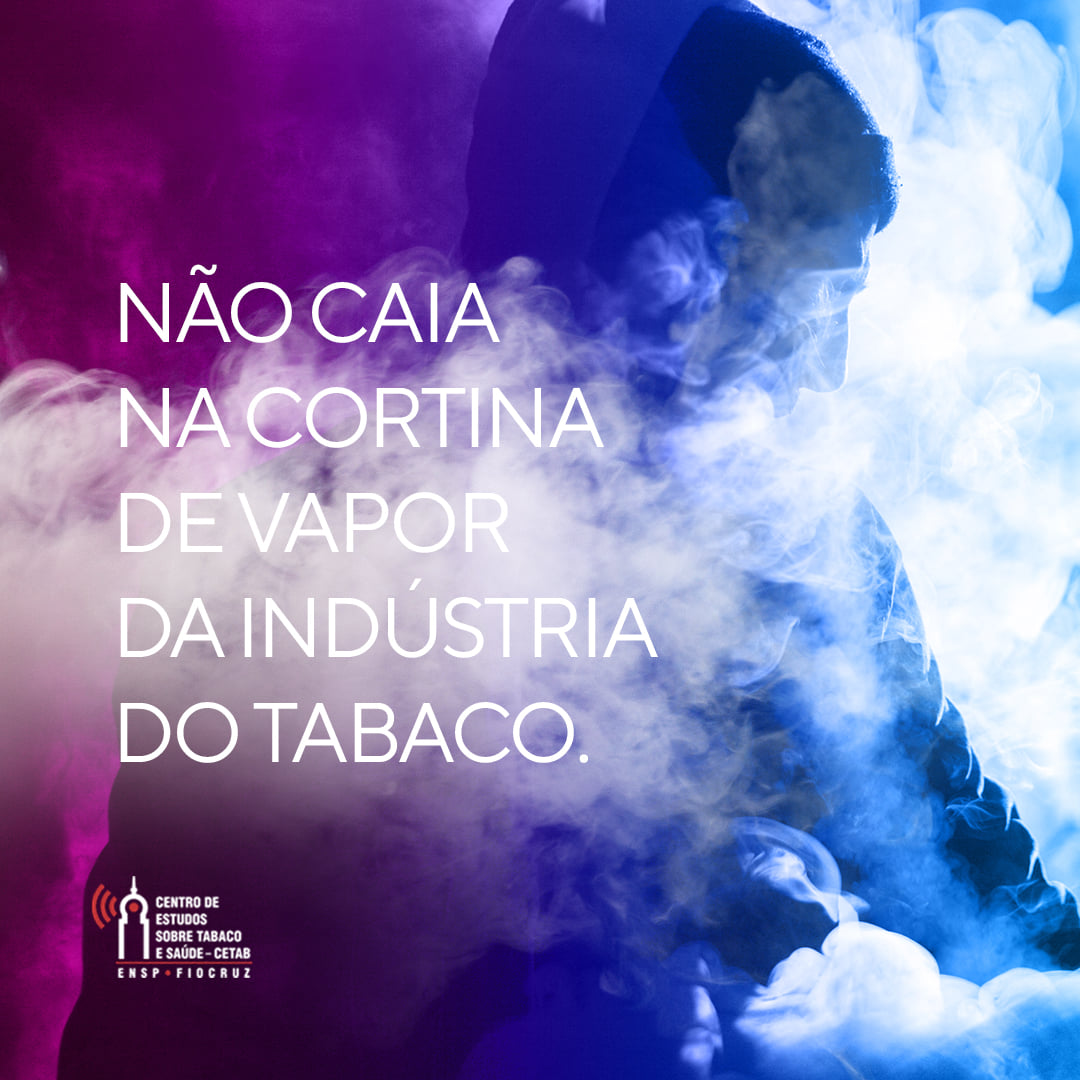
During the Covid-19 epidemic, the world saw the tobacco industry using these strategies to promote their business and adopting a direct approach such as donating supplies and money to hospitals, towns, cities and organizations, and indirect approaches, which used front groups within the Executive, Legislative and Judiciary Branches at different government levels (federal, state and municipal) to defend their interests.
Reporting this type of approach has been relevant to public health and governments must protect the integrity of their policies, especially by implementing the World Health Organization’s Framework Convention on Tobacco Control, the first international public health treaty, which brings together 182 countries.
Fiocruz, In this sense, through the Center for Studies in Health and Tobacco (Centro de Estudos em Saúde e Tabaco - Cetab), has investigated and reported the corporate social responsibility activities developed by the tobacco industry. We believe this has been collaborating towards changing the narrative to neutralize actions by the industry, informing leaders in the areas of tobacco control and public health about the existing contradictions.
Social media campaign Say No to Electronic Cigarettes, showing the health risks posed by the use of Electronic Smoking Devices (ESDs) and how the waste generated by these products pollutes the environment, is a good example of how the data found in these monitoring actions is used.

The campaign was disseminated through Instagram, Facebook, YouTube, as well as podcasts with influencers and experts, and covered ten states and reached over four million users on Facebook and Instagram, in addition to 727,346 on Twitter, in a total of over five million people impacted.
The “Say no to Electronic Cigarettes” petition was also launched, receiving over 9 thousand adhesions supporting the maintenance of RDC 46/2009, a resolution by the National Health Surveillance Agency with the prohibition to manufacture, market and advertise ESDs in Brazil. The decision to uphold the rule was unanimous, with the recommendation to increase awareness and enforcement actions.
All this movement was supplemented by the publication of a study on how the industry uses social responsibility actions to promote the use of ESDs.
The repercussion of the Fiocruz campaign undoubtedly collaborated towards fighting arguments used by the tobacco industry, creating a more favorable environment for tobacco control and exposed the consequences and negative implications of companies’ partnerships and sponsorships; we also know that it will continue to help to build political will and support for public health policies.
Technical File
Proofreading and editing: Anna Monteiro
Art: Ronieri Gomes
Collaborators on this edition: Silvana Rubano Turci
Monitoring team
Anna Monteiro
Bruna Hassan
Denise Simões
Fabiana Fregona
Laura Cury
Mariana Pinho
Marília Albiero
Victoria Rabetim
Vitória Moraes

